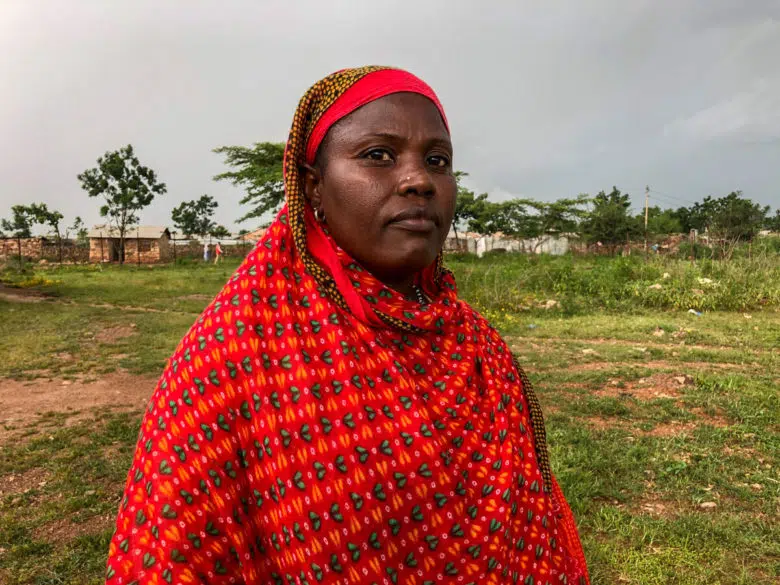
Fathma, 36, is an Eritrean refugee in Ethiopia. After eight years living in the Shimelba refugee camp, eight months ago she found herself again fleeing for her life as the conflict in Tigray reached the camp which was finally destroyed. © UNHCR/Olga Sarrado Mur
After eight years living in the Shimelba refugee camp, Fathma (pictured above), an Eritrean refugee, found herself fleeing for her life once again. The conflict in the Tigray region of northern Ethiopia reached the camp, which was destroyed. She is now among the refugees being sheltered in Mai Aini and Adi Harush refugee camps in the south of the Tigray region.
“We are scared here, we have lost everything,” Fathma explains, admitting that she is tired of moving her children from place to place. “I feel helpless, I want to give my children a future and the chance to continue with their education.”
More than a year into the conflict, the ongoing humanitarian and protection emergency in northern Ethiopia is continuing to have far-reaching impacts. The situation continues to be deeply concerning for refugees like Fathma, as well as the internally displaced and host communities. Civilians have extremely limited basic services and assistance available, leading to a significant escalation in humanitarian needs with ongoing displacement.
The conflict in the three regions of northern Ethiopia — Tigray, Afar and Amhara — has led to the internal displacement of more than three million people, with displacement continuing to occur on a daily basis. Approximately 9.4 million people are in urgent need of food and other aid. UNHCR is also working to assist thousands of Eritrean refugees in the country, and Ethiopians being hosted in eastern Sudan.

Ethiopia. Beyenesh an internally displaced woman by the Tigray conflict prepares traditional bread in a makeshift clay oven.
© UNHCR/Olga Sarrado Mur
Beyenesh (pictured above) fled her home in Tigray in November as clashes reached her hometown. Now she lives with her children in the Five Angels site in Shire, western Tigray, which shelters forcibly displaced families. “We are hungry, sometimes we just eat a piece of bread without any sauce but at least we are safe,” she explains, as she cooks the early morning bread in a clay stove she made and which she shares with her neighbours.
In addition to distributing blankets, kitchen utensils and shelter materials to internally displaced people (IDPs), UNHCR has established a network of more than 50 protection desks, which are accessible to more than 500,000 people – with plans to expand as needed. UNHCR has also established a new warehouse in the Tigray regional capital, with a capacity of 2,000 square metres to have enough storage capacity for lifesaving relief items. Despite ongoing efforts, UNHCR and partners are continuing to face severe challenges impacting the ability to both work and deliver assistance in the midst of the volatile security situation.
PLEASE DONATE TO SUPPORT INTERNALLY DISPLACED PEOPLE IN THE TIGRAY REGION
Originally published by: UNHCR Canada 2 St. Clair Avenue West, Suite 802, Toronto, Ontario M4V 1L5.





